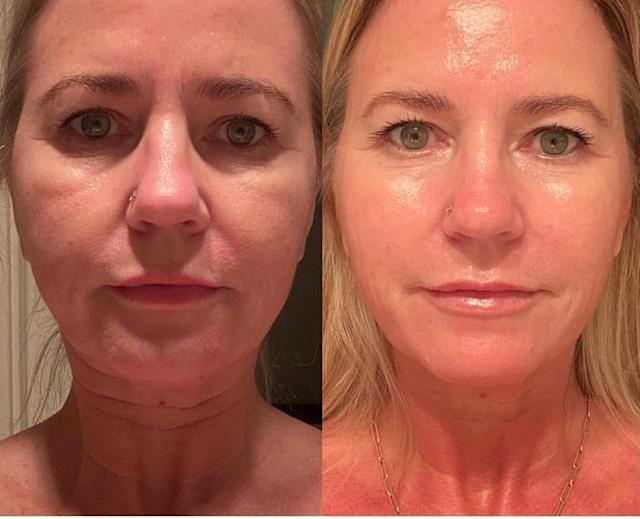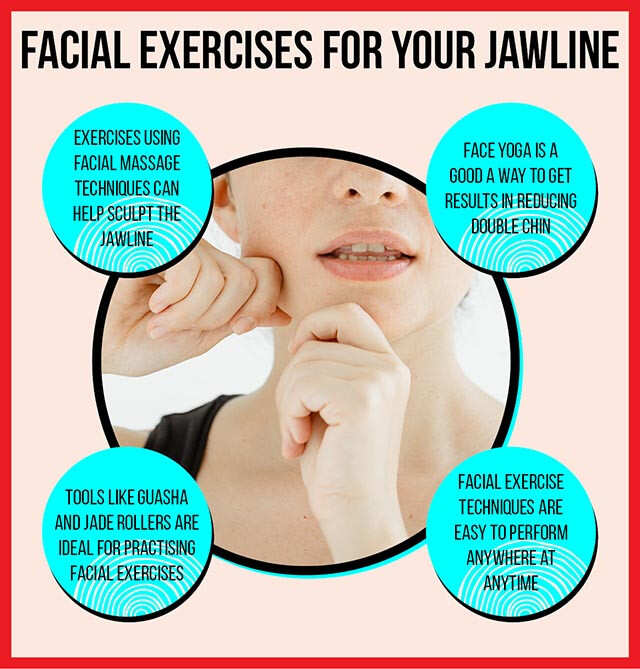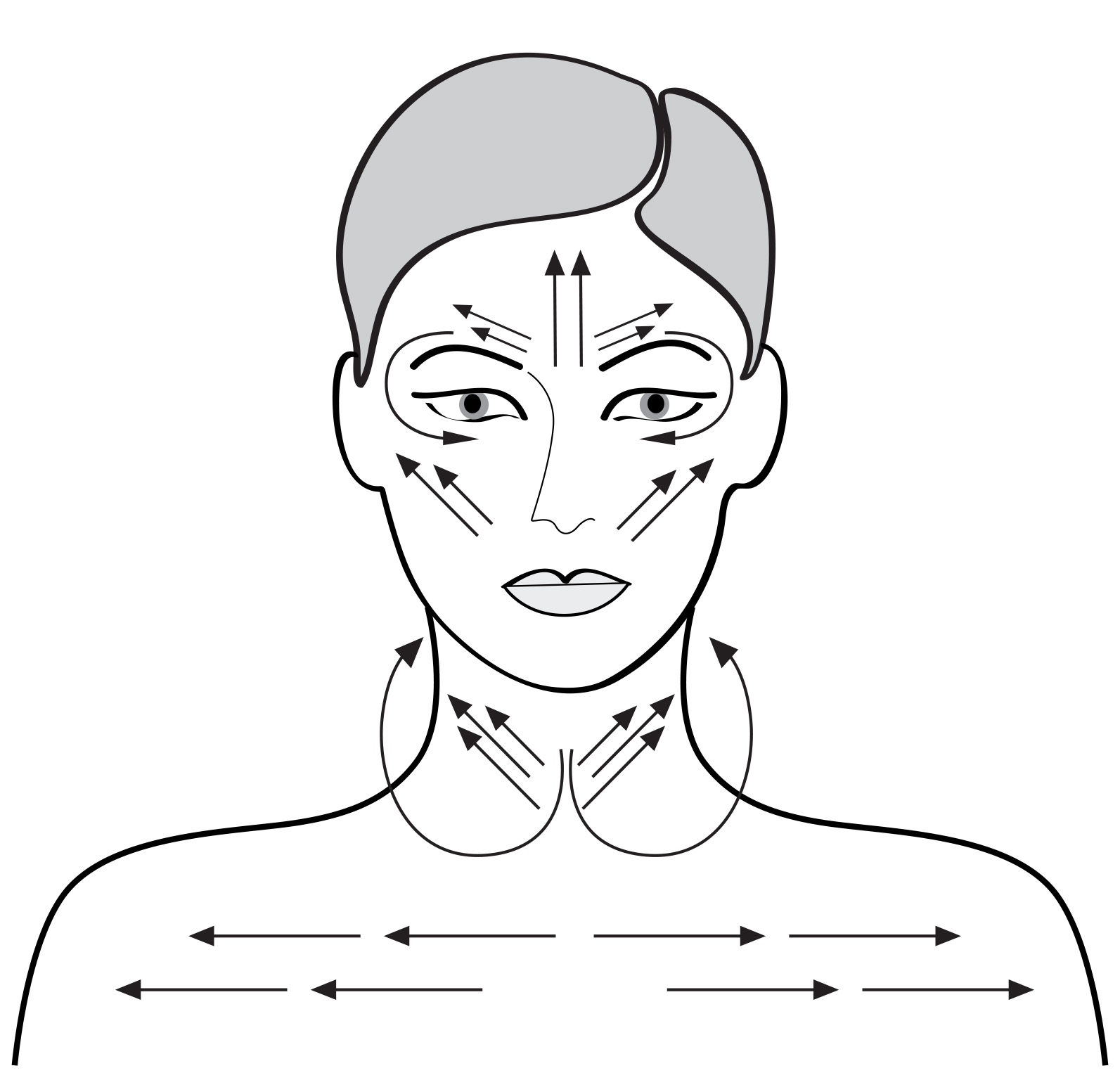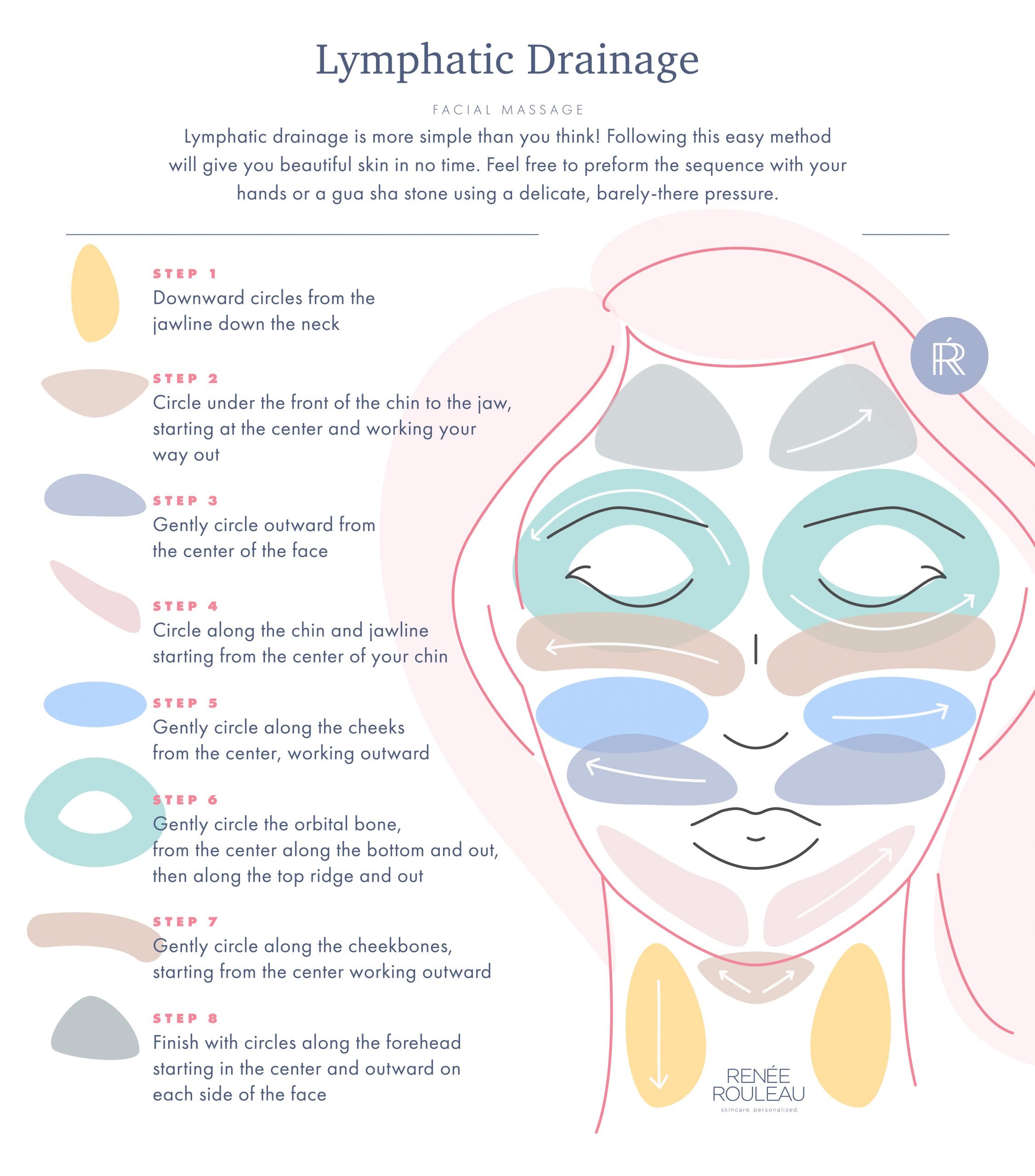Topic fascia face massage: Discover the transformative benefits of Fascia Face Massage, a holistic approach to rejuvenate your skin and release tension for a glowing, youthful appearance.
Table of Content
- Benefits of Fascia Face Massage
- How to Perform Fascia Face Massage
- What are the benefits of fascia face massage for skin suppleness and muscle tension relief?
- YOUTUBE: Relaxation with Fascia Facial Massage
- How to Perform Fascia Face Massage
- Introduction to Fascia and Its Importance in Facial Health
- Top Benefits of Fascia Face Massage
- Step-by-Step Guide to Performing Fascia Face Massage
- Common Areas of Tension and How to Address Them
- Additional Tips for Enhancing Fascia Health
- Professional Fascia Massage and Therapy Options
- Emotional and Physical Health Benefits of Fascia Massage
- Maintaining Results: Lifestyle Changes and Routine Maintenance
- Frequently Asked Questions About Fascia Face Massage
- Conclusion: Integrating Fascia Face Massage into Your Daily Routine
Benefits of Fascia Face Massage
- Improves circulation and lymphatic drainage, reducing puffiness and promoting a healthy glow.
- Relieves tension and stress in the face, reducing the likelihood of wrinkles and fine lines.
- Enhances muscle tone and elasticity for a more youthful appearance.

READ MORE:
How to Perform Fascia Face Massage
- Start with a gentle free-form massage of the face, neck, and scalp to identify areas of tension.
- Massage each section of the face with medium pressure, supporting the middle of the face while the working hand moves outward.
- Focus on areas with the most tension, such as the neck and scalp, to improve overall circulation and vitality.
Additional Tips for Healthy Fascia
- Stay hydrated to keep your fascia adaptable and healthy.
- Incorporate new and energized movements into your routine like walking or dancing.
- Consider professional fascial massage or therapy for deeper fascia work.
| Technique | Benefits |
| Hydration | Keeps fascia flexible and efficient. |
| Regular Movement | Encourages new supportive movements and patterns. |
| Emotional Health | Helps release stored emotions in fascia, promoting mental well-being. |
By integrating fascia face massage and these health tips into your routine, you can enjoy a refreshed and rejuvenated facial appearance.

What are the benefits of fascia face massage for skin suppleness and muscle tension relief?
Facial fascia massage offers numerous benefits for skin suppleness and relief of muscle tension. Here are some of the key benefits:
- Improves Skin Suppleness: Fascia face massage helps in improving skin suppleness by reducing muscle tension in the face and jaw. This, in turn, increases blood flow to the skin and promotes collagen production, leading to a more youthful and radiant complexion.
- Reduces Muscle Tension: By targeting the fascia - the connective tissue that surrounds and supports muscles - facial fascia massage can help in releasing muscle tension, especially in areas like the jaw and temples. This can relieve headaches, facial pain, and promote relaxation.
- Promotes Lymphatic Drainage: Fascia face massage also promotes lymphatic drainage, which helps in reducing puffiness, eliminating toxins, and improving the overall health and appearance of the skin.
- Natural Lift and Symmetry: The massage techniques used in fascia face massage can help in providing a natural lift to the face, enhancing symmetry, and reducing the appearance of sagging or drooping skin.
Relaxation with Fascia Facial Massage
Relaxation: \"Escape the chaos of daily life and immerse yourself in a world of serenity and calm. Let the soothing sounds and peaceful visuals in this video wash away your stress and bring a sense of relaxation like never before.\" Anti-Aging: \"Unlock the secrets to youthful skin and a radiant glow in this captivating video focused on anti-aging techniques and skincare tips. Discover how to defy age gracefully and embrace a more vibrant and youthful version of yourself.\"
How to Perform Fascia Face Massage
- Start with a gentle free-form massage of the face, neck, and scalp to identify areas of tension.
- Massage each section of the face with medium pressure, supporting the middle of the face while the working hand moves outward.
- Focus on areas with the most tension, such as the neck and scalp, to improve overall circulation and vitality.
Additional Tips for Healthy Fascia
- Stay hydrated to keep your fascia adaptable and healthy.
- Incorporate new and energized movements into your routine like walking or dancing.
- Consider professional fascial massage or therapy for deeper fascia work.
By integrating fascia face massage and these health tips into your routine, you can enjoy a refreshed and rejuvenated facial appearance.

Anti-Aging Fascia Contouring Massage
Fascia Contouring Massage Today I go over how to get rid of wrinkles and puffiness in the face using one of my very own products ...
Introduction to Fascia and Its Importance in Facial Health
The fascia, a connective tissue, plays a pivotal role in facial health, wrapping around muscles, bones, and organs. It supports and maintains facial structure, enabling fluid movement and providing a cushioning effect. Understanding fascia\"s impact can revolutionize your approach to skin care and wellness.
- Fascia is involved in circulation, aiding in the removal of toxins and delivery of nutrients to skin cells.
- Proper fascial function contributes to a vibrant, youthful complexion by facilitating blood flow and lymphatic drainage.
- Stress, dehydration, and lack of movement can lead to fascial tightness, resulting in fine lines, wrinkles, and puffiness.
- Regular fascia face massage can release tension, promoting a smoother, more toned skin appearance.
Incorporating fascia massage into your routine supports overall facial health, enhances elasticity, and helps maintain a radiant, healthy glow.

_HOOK_
Top Benefits of Fascia Face Massage
Fascia face massage is an innovative approach to skin care that targets the fascia layer beneath the skin. This technique offers several remarkable benefits for facial health and aesthetics.
- Improves Circulation and Lymphatic Drainage: Facilitating better blood flow and reducing puffiness, fascia face massage promotes a healthy, glowing complexion.
- Relieves Tension and Stress: By massaging the face, tension in the facial muscles is released, contributing to a smoother, more relaxed facial appearance.
- Enhances Muscle Tone and Skin Elasticity: Regular fascia massage can lead to firmer, more supple skin by improving muscle tone and skin elasticity.
- Emotional and Physical Relief: The massage process can help release trapped emotions and reduce anxiety, providing both physical and emotional relief.
- Supports Facial Health: Beyond immediate relaxation and aesthetic improvements, fascia massage contributes to long-term facial health by promoting detoxification and nutrient delivery.
While fascia face massage offers numerous benefits, including improved skin appearance and reduced stress, it\"s important to approach it with proper technique and understanding. Gentle movements and consistent practice are key to achieving the best results and avoiding any potential skin irritation or damage.

Step-by-Step Guide to Performing Fascia Face Massage
Fascia face massage is an effective technique to improve skin elasticity, reduce tension, and enhance overall facial health. Here\"s a detailed step-by-step guide to help you perform a fascia face massage correctly:
- Preparation: Use a few drops of facial oil to ensure smooth movement over the skin. This helps in avoiding any friction and makes the massage more effective.
- Starting Technique: Begin with a gentle massage of the face, neck, and scalp to pinpoint areas of tension. Use deep circular motions to ease the muscles in these areas.
- Neck and Scalp Focus: Pay special attention to the neck and scalp since they are key areas that affect facial tension and circulation.
- Forehead to Jawline: Use medium pressure, starting from the forehead, gliding outwards towards the temples and then moving down the face, section by section, towards the jawline.
- Repeat on the Other Side: After completing one side, mirror the same steps on the other side of the face to ensure symmetry and balance.
- Final Steps: End the massage by gently going over the entire face again to ensure all areas have been covered and relaxed.
Remember, the key to a successful fascia face massage is consistency and gentleness. Avoid any areas with active acne or recent Botox injections to prevent irritation or complications.
- Consistent practice will yield the best results, helping your skin to become firmer and more supple over time.
- Ensure to breathe deeply throughout the massage to enhance relaxation and effectiveness of the treatment.
With regular practice, you can enjoy the numerous benefits of fascia face massage, including improved skin texture, reduced puffiness, and a more youthful appearance.

Common Areas of Tension and How to Address Them
Identifying and addressing common areas of facial tension can significantly enhance the effectiveness of fascia face massages. Below, we discuss the primary tension areas and offer guidance on mitigating discomfort.
- Neck and Scalp: Tension in these areas can impede circulation, contributing to facial puffiness and dull complexion. Gentle, circular massages from the neck to the scalp can release this tension, enhancing overall facial vitality.
- Jaw and Temples: Stress often accumulates in the jaw and temples, leading to tightness. Applying medium pressure and massaging these areas can help alleviate strain and promote relaxation.
- Forehead: Repetitive facial movements and stress can lead to forehead tension. Smooth, outward strokes from the center can help ease this tightness.
- Brows: Squeezing and releasing the brow area can relieve tension, especially beneficial for those who frown or squint frequently.
- Facial Edges: Using techniques like skin rolling and facial tapping around the cheekbones and jawline can boost circulation and muscle relaxation.
Regular practice of these massage techniques, combined with proper hydration and relaxation exercises, can help maintain a healthy, tension-free facial appearance. Remember, gentle pressure and consistency are key to achieving the best results and avoiding skin irritation.

Additional Tips for Enhancing Fascia Health
Maintaining healthy fascia contributes significantly to overall well-being and facial appearance. Here are some additional tips to ensure your fascia remains supple and healthy:
- Stay Hydrated: Drink plenty of water to maintain the elasticity and health of your fascia. Proper hydration helps in keeping the tissue flexible.
- Embrace Movement: Engage in activities like walking, dancing, and running to keep your body and fascia active. This promotes circulation and prevents the fascia from stiffening.
- Regular Stretching: Incorporate stretching into your daily routine to reduce fascial tension and increase mobility.
- Emotional Well-being: Addressing emotional health can prevent fascia from tightening due to stress or negative emotions. Techniques such as mindfulness or therapy can be beneficial.
- Self Fascia Release: Utilize tools like foam rollers or fascia blasters to work on tight areas, improving flexibility and reducing pain.
- Professional Guidance: Consider sessions with professionals skilled in fascial therapy to address specific issues and learn effective techniques for fascia maintenance.
Adopting these practices into your daily routine can lead to significant improvements in your fascia\"s health, enhancing both your physical mobility and facial aesthetics.

Professional Fascia Massage and Therapy Options
Professional fascia massage and therapy offer a range of techniques to improve fascia health, flexibility, and function. These treatments are designed to reduce pain, enhance movement, and support overall wellness.
- Myofascial Release Therapy: This technique is used for treating pain and increasing blood flow. It\"s effective for conditions like fibromyalgia and can improve sleep and reduce anxiety.
- Physical Therapy: Incorporating fascia-focused techniques, physical therapy can address issues like chronic back pain and carpal tunnel syndrome, enhancing movement and reducing discomfort.
- Massage Therapy: Specialized massage techniques focus on loosening tight fascial tissues, improving circulation, and aiding in muscle recovery.
- Chiropractic and Osteopathic Manipulation: These approaches can include fascial manipulation to improve structural alignment and relieve pressure on the fascia.
- Fascial Stretch Therapy: This method stretches the fascia directly, improving mobility and reducing pain associated with movement dysfunction and postural inefficiencies.
Professionals such as massage therapists, chiropractors, and osteopaths can provide these services, offering tailored treatments based on individual needs and conditions. Regular sessions are recommended for the best results, with a frequency determined by the severity and nature of the condition being treated.
Exploring these professional options can significantly contribute to your fascial health, leading to improved flexibility, reduced pain, and enhanced overall well-being.
_HOOK_
Emotional and Physical Health Benefits of Fascia Massage
Fascia massage provides significant benefits for both emotional and physical well-being. By targeting the connective tissue, this therapy can alleviate physical discomfort while simultaneously addressing stored emotional trauma.
- Emotional Release: Fascia has the unique capacity to store emotions and traumas, acting as a \"story body.\" Releasing fascial adhesions can help individuals process and move past emotional pain, leading to states of euphoria and mental clarity.
- Physical Relief: Myofascial release can improve range of motion, reduce soreness, and assist in tissue recovery. This leads to an overall relaxation of the body, improved circulation, and release of tension and stress knots.
- Improved Mobility: By breaking the patterns of restriction in the body, fascia massage promotes new, supportive movements, enhancing flexibility and reducing chronic pain conditions like fibromyalgia and nerve compression syndromes.
- Mental Health: Self-myofascial release (SMFR) can help down-regulate biological aspects of pain and positively affect psychosocial components, leading to physiological relaxation and increased parasympathetic activity.
- Inflammation Reduction: Addressing knots and adhesions in fascia can alter body-wide inflammation, a root cause of many chronic illnesses and diseases.
By incorporating fascia massage into regular health routines, individuals may experience significant improvements in both their physical and emotional health, contributing to a better quality of life and overall well-being.
Maintaining Results: Lifestyle Changes and Routine Maintenance
After experiencing the benefits of fascia face massage, maintaining results requires some lifestyle changes and routine maintenance. These adjustments ensure long-lasting effects and continuous improvement in facial health and appearance.
- Hydration: Keeping the body hydrated is crucial for maintaining soft and supple fascia. Drink plenty of water daily to help facilitate the smooth functioning of fascial tissues.
- Regular Movement: Engage in daily activities such as walking, dancing, or yoga to keep your fascia flexible and prevent it from stiffening. Regular physical activity promotes circulation and helps maintain elasticity.
- Consistent Fascia Care: Incorporate fascia face massage into your regular skincare routine. Consistent care can help maintain the benefits and prevent the re-accumulation of tension and toxins.
- Nutrition: A balanced diet rich in nutrients can support fascial health. Consider incorporating anti-inflammatory foods to help reduce swelling and promote healing.
- Posture and Stress Management: Be mindful of your posture, especially if you spend long hours sitting. Managing stress through mindfulness or meditation can also reduce facial tension and support fascial health.
- Professional Treatments: Regular sessions with a skilled therapist can help maintain fascial health and address any emerging issues before they become problematic.
Implementing these changes into your daily life can help extend the benefits of your fascia face massage, leading to improved facial tone, reduced wrinkles, and a more youthful appearance over time.
Frequently Asked Questions About Fascia Face Massage
- What is fascia face massage?
- Fascia face massage targets the connective tissue just below the skin\"s surface, aiming to improve blood circulation, lymphatic drainage, and facial muscle relaxation. It can lead to a fresher appearance and smoother skin.
- How do I perform a fascia face massage?
- Start with clean skin and use a few drops of facial oil for slip. Begin with a free-form massage of the face, neck, and scalp, focusing on areas of tension. Support the skin with one hand while the other performs the massage, moving slowly and with intention.
- Can fascia face massage change the shape of my face?
- While fascia face massage can improve the appearance of your skin and may reduce puffiness, it is unlikely to significantly alter face shape. The structure of the face is primarily determined by bones, fat distribution, and skin elasticity.
- Are there any areas I should avoid during fascia face massage?
- Avoid massaging over areas with fresh Botox injections and active acne to prevent irritation or spreading bacteria.
- What are the benefits of fascia face massage?
- Benefits include improved circulation, relaxation of facial muscles, enhanced lymphatic drainage, and potential reduction in the appearance of wrinkles and puffiness.
- How often should I perform fascia face massage?
- Frequency can vary based on personal comfort and skin condition, but for visible results, a regular routine is recommended. Start with gentle pressure, increasing as your fascia health improves.
- What should I do if I experience pain or bruising?
- If you experience significant discomfort or bruising, reduce the pressure and frequency of your massages. Consult a dermatologist if the issue persists or worsens.
READ MORE:
Conclusion: Integrating Fascia Face Massage into Your Daily Routine
Integrating fascia face massage into your daily routine can lead to significant improvements in skin texture, appearance, and overall facial health. Here\"s how you can make this beneficial practice a regular part of your skincare routine:
- Consistent Practice: Regular fascia massage, similar to practices like gua sha, can help maintain the skin’s youthfulness and suppleness. Incorporate it into your evening routine for relaxation and to reduce facial tension.
- Hydration: Keeping the skin and body well-hydrated is crucial for maintaining the elasticity and health of fascia. Drink plenty of water and use hydrating skincare products.
- Mindful Movement: Incorporate activities like yoga or gentle stretching into your daily routine to support the overall health of your fascia, improve circulation, and enhance lymphatic drainage.
- Proper Technique: Use the correct tools and methods, such as flat fingers or a gua sha board, and apply medium pressure without over-rubbing to avoid irritation and inflammation. Focus on areas like the neck, shoulders, and jaw, where tension commonly accumulates.
- Address Stress: Recognize and manage stress, as it can contribute to facial tension and affect the health of your fascia. Integrating mindfulness and relaxation into your routine can help alleviate this tension.
- Professional Guidance: If unsure about techniques or if you have specific skin concerns, consult with a dermatologist or a professional aesthetician. They can provide tailored advice and help you avoid any adverse effects.
By making fascia face massage a regular part of your skincare regime, you can enjoy lasting benefits, including improved skin appearance, reduced puffiness, and a more relaxed facial expression. Remember, consistency and gentle, mindful practice are key to achieving the best results.
Embrace the transformative power of fascia face massage to rejuvenate your skin and release tension. Integrating this practice into your daily routine can lead to a radiant, youthful complexion and improved overall facial health.













:max_bytes(150000):strip_icc()/cdn.cliqueinc.com__cache__posts__264935__facial-massage-technique-264935-1533751559897-image.700x0c-e8c06b17028546fcabf17fcf03b25573.jpg)



